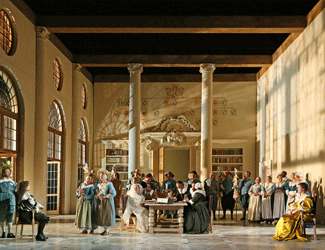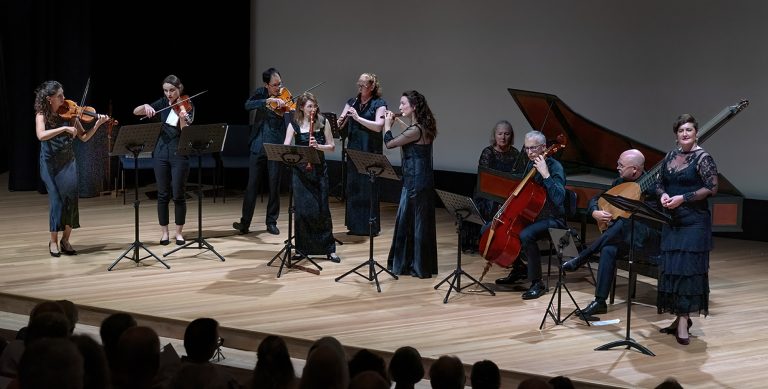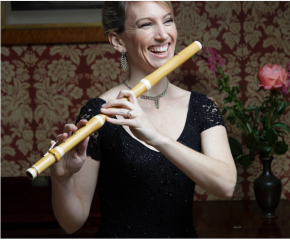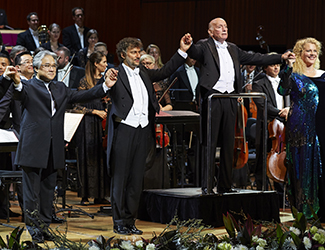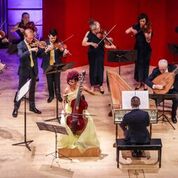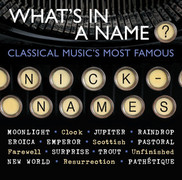Review: The Marriage Of Figaro/Opera Australia
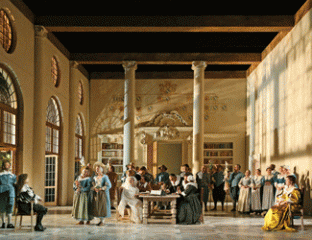
The Marriage of Figaro – Mozart,
Opera Australia, August 6th 2015
Joan Sutherland Theatre, Sydney Opera House
Last week Opera Australia unveiled its new production of The Marriage of Figaro, the second in the series of three Mozart-da Ponte operas which Sir David McVicar is realising for the company.
In a complete contrast to the malevolent overtones of Don Giovanni (which premiered last year) and Faust (another McVicar production for OA), The Marriage of Figaro is a mercurial and at times riotous romp in which its musical merits stand alongside perfect comedic timing, sumptuous costumes and splendid set and lighting design.
Conductor Guillaume Tourniaire, (baton in his left hand) set the mood with his zippy tempi as the patchwork calico curtain was drawn back to reveal the events of the ‘Crazy Day’ both below and above the stairs.
The cast could have stepped from the frame of a painting by Vermeer or Rembrandt, clad in Jenny Tiramani’s exquisitely detailed and richly coloured costumes which fleshed out the narrative. Her sets, delicately illuminated by lighting designer David Finn hinted at an Iberian setting underscored by the glimpse of an orange tree on the patio. Filtered through the large windows of the set, the changing shadows served as the day’s chronometer.
Paolo Bordogna delighted once again, both vocally and dramatically in his buffo role as Figaro. Taryn Fiebig sang a polished, light and lyrical Susannah coloured with feisty servitude and an impish, conspiratorial humour. Her duettino Via resti servito with Marcellina, brilliantly portrayed by Jacqueline Dark, was as venomous as any playground fracas could get; yet, her singing was delicate in her duettino Che soave zeffiretto with Countess Almaviva, elegantly sung by Nicole Car and in a beautiful blend of the two voices.
Nicole Car played an anguished but gracious noblewoman, spinning her sound into phrases of extraordinary length in her two major arias taken at a broader more meditative pace.
Conqueror of the 2011 Cardiff Singer of the World competition, baritone Andrei Bondarenko played a predatory, Count Almaviva, asserting his droit de Seigneur to bed the young women in his feudal service. His aria Vedro mentr’io sospiro was a menacing showstopper. However, having had the good fortune of hearing him in full flight as Onegin in St Petersburg in June, I was left wishing for more, as most of the Count’s singing is embedded ensemble and recitative.
There were clever caricatures matched by superlative singing from Richard Anderson as Dr Bartolo, Benjamin Rasheed as Don Basilio and Adrian Tamburini as Antonio. Rising star and Young Artist Anna Dowsley as Cherubino was a favourite, playing the girl playing the boy playing the girl. Her portrayal of the lanky adolescent with a libido that was growing even more quickly than his physique, was entertaining and supported by a strong vocal performance.
Taut ensemble singing from the soloists drove the action, maintaining the pace and thickening the intrigue. Due credit too to Siro Battaglin at the Fortepiano, the chorus and orchestra of Opera Australia.
The play by Beaumarchais on which the opera is based was considered to be so licentious that it was banned from the Viennese stage. Objections were overcome and The Marriage of Figaro premiered in Vienna in 1786, directed by Mozart himself from the keyboard. It was popular enough for emperor Joseph II to place a ban on excessive encores and to decree that only arias were to be repeated. The opera is now a cornerstone of companies around the world and it was the inaugural production for the Glyndebourne Opera company when it opened in 1934. The sophistication and beauty of the writing make it hard to believe that Mozart was barely 30 when he composed this opera.
An entertaining production with stellar performances.
Shamistha de Soysa for SoundsLikeSydney©
The Marriage of Figaro is being performed in the Joan Sutherland Theatre of the Sydney Opera House on selected evenings and afternoons until August 29th 2015.

